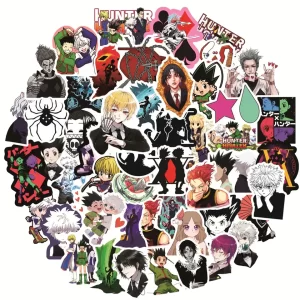Every once in a while, we come across terms that seem synonymous but hold slight variations in their definitions. Stickers and decals are two such terms. While they both stick to surfaces and often serve decorative or informational purposes, there are subtle differences between them.
Origins and Common Uses
Originating from different applications, stickers are typically more casual and versatile, while decals are primarily designed for long-term outdoor use. The term ‘decal’ is often associated with vehicle decorations or wall art. In contrast, ‘sticker’ is a broader term that encompasses various types, including labels.
What is a Decal?
Decals are essentially decorative stickers, primarily designed for outdoor use. With their three-layered structure, they can transfer from one surface to another. Vinyl decals, in particular, are very durable.
Materials and Longevity
Most decals are printed on vinyl, ensuring they’re both durable and weather-resistant. Some may even have an over laminate to shield against UV rays. Depending on the quality, decals can last anywhere from five to seven years, standing firm against the elements.
Decal Applications
Their durable nature makes decals ideal for cars, water bottles, laptops, and pretty much any smooth surface. Their designs can range from intricate patterns to simple, solid colors.

What is a Sticker?
Stickers are adhesive labels or designs printed on paper, vinyl, or other materials.
Sticker Composition and Use
Stickers usually comprise two layers – the decorative part and the peel-away paper at the back. They can be seen everywhere, from stamps to bottle labels and even vehicle decorations. A quality sticker can last up to eight years, depending on its material and exposure.
Varieties of Stickers
From bumper stickers to brand labels, the term ‘sticker’ can encompass a myriad of designs and purposes.
The Role of Vinyl in Stickers
Vinyl is a popular choice for stickers due to its durability.
Features of Vinyl Stickers
Often referred to as wall decals or tattoos, vinyl stickers are ideal for decorating rooms or promoting businesses. They’re versatile, adhering to glass, walls, or even sandwich boards.
Adhesive Surfaces for Vinyl Stickers
Vinyl stickers adhere best to clean, smooth surfaces. Typical surfaces include glass, sealed wood, plastic, and metal. Whether it’s on a laptop or a storefront window, the application is relatively straightforward.
Safeguarding Your Car’s Paint
Stickers and decals won’t harm your car’s paintwork if applied correctly.
Precautions and Tips
While they’re generally safe, it’s crucial to ensure that you’re using vehicle-safe adhesive products. An incorrect choice could lead to paint damage. Opt for decals with acrylic adhesives, as they won’t interfere with the paint’s chemistry.
The Removal Process of Decals
Though decals are long-lasting, there might come a time when you want a change.
Step-by-Step Removal
Using a hair dryer on a warm setting, gently heat the corner of the decal. Gradually heat and peel until it’s entirely removed.
Residual Cleanup Methods
Post removal, there might be adhesive residue left behind. Warm soapy water or eucalyptus oil should do the trick.
Conclusion
While stickers and decals may appear similar, understanding their differences can help in making an informed choice. Whether you’re branding your business or personalizing your space, choose wisely!
Next time, we’ll talk about labels, invented by Avery and used in packaging, products, and more.













